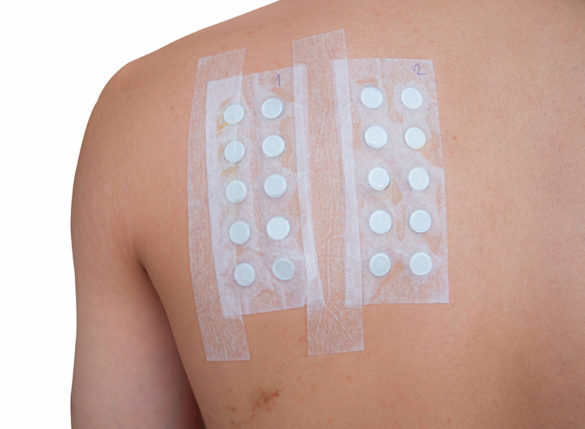 Allergies can be more than just inconvenient; for many, they’re a serious health concern that can affect day-to-day living. If you’ve struggled with unexplained eczema like rashes, or skin irritation, you might already understand the frustration of not knowing exactly what’s causing your discomfort. Fortunately, there’s a way to get answers: allergy patch testing.
Allergies can be more than just inconvenient; for many, they’re a serious health concern that can affect day-to-day living. If you’ve struggled with unexplained eczema like rashes, or skin irritation, you might already understand the frustration of not knowing exactly what’s causing your discomfort. Fortunately, there’s a way to get answers: allergy patch testing.
Understanding Allergy Patch Testing
Allergy patch testing is a specialised procedure used to identify specific substances, known as allergens, that may be causing allergic skin reactions, also referred to as allergic contact dermatitis. Although many people look for food allergies to explain their eczema, food is almost never implicated. So unlike immediate allergy tests that look for immediate reactions to substances in foods, patch testing helps to truly uncover delayed allergic responses to substances that come into contact with your skin to cause an eczema type rash.
Many potential food allergies can be investigated through blood tests (called radioallergosorbent tests or RAST). However, food allergies more frequently cause a hive like rash affecting the tongue and lips and very rarely if ever cause an eczema like rash affecting the body and limbs. We ask people to be wary of being offered RAST allergy tests to investigate eczema!
The Patch Testing Process
The process is surprisingly straightforward but requires patience. Here’s what typically happens:
- Preparation: Your skin, usually on your back, needs to be clear of any creams or medications and in a relatively calm state. This ensures nothing interferes with the test results.
- Application: Small patches, each containing a tiny amount of a potential allergen, are applied to your skin. These patches are typically left in place for 48 hours, during which you’ll need to keep them dry and avoid vigorous physical activity.
- Observation: After the patches are removed, your dermatologist will look for any reactions on your skin. But the evaluation doesn’t end there; another check often occurs 72 to 96 hours after removal of patches because true allergic reactions typically take longer to appear.
What’s Tested?
The substances tested during patch testing can range widely, including metals (like nickel), fragrances, preservatives found in cosmetics and creams, medications, and even components of plants. The specific allergens included in your test will depend on your history and exposure risk. However, the British Society for Cutaneous Allergy maintains a list of 45-50 substances known to cause 80-85% of all allergic reactions in the UK. This is called the British standard series and is updated regularly as new products and allergens enter circulation. The British standard series the best starting point for patch test investigations.
Reading the Results
Assessing the patch test results is the key to understanding your allergies. Your dermatologist will look for any skin changes, like redness or swelling at the test sites. A positive reaction may vary from mild redness to blisters, indicating an allergy to the substance within that patch. No reaction typically means you’re not allergic to the tested substance.
What’s Next After Allergy Patch Testing?
Once your allergens have been identified, your dermatologist will guide you on how to avoid these substances and manage your symptoms. This could involve changes to your daily routine, recommendations for avoidance of certain skincare products, or lifestyle adjustments to minimise the chances of contact with your allergens.
If you’re experiencing persistent skin issues and wondering if allergies might be to blame our expert dermatologists are here to help. Contact Diamond Skin Care on 01603 298396 or book an appointment.


